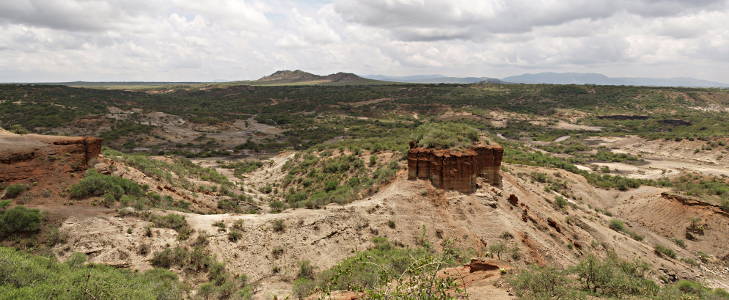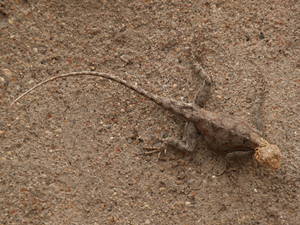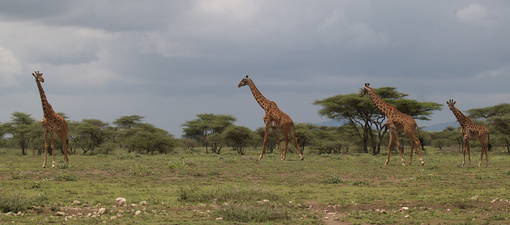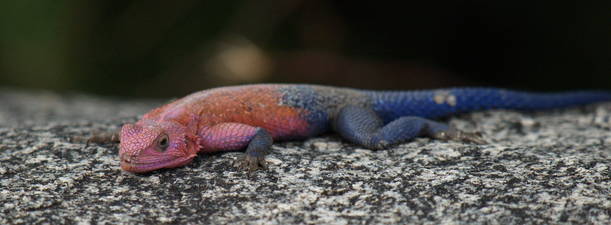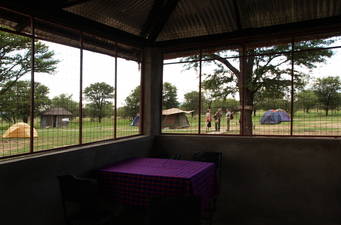Olduvai Gorge
Tuesday 22nd March
In the morning the sleeping bag I was using was damp and there was a small
puddle of water in the lowest corner of the tent, the result of leaving
the side flap open a little for ventilation. And it was drizzling as they
packed up the tents and we ate breakfast. Oatmeal (already sweetened)
made a nice change here and I noticed there was no bacon, ubiquitous at
breakfasts in Kenya, perhaps because there are more Muslims in Tanzania.
I used the lodge's "Internet cafe" to vote in the NSW state election,
having forgotten to when we were in Arusha. (I don't trust random
computers, but in this case I was only risking my one-time iVote
credentials.)
There was a small exhibition at the entry to the Ngorongoro Conservation
Area. We also stopped for a view of the crater as we drove along the rim,
but it was misty and there wasn't much to be seen.
We took brief detour to visit Olduvai Gorge, where some of the major
hominid fossils have been found. There's a nice little museum here
that has exhibits on these fossils and the work done by the Leakeys,
as well as on the footprints at Laetoli (nearly 50km to the south)
and their preservation. And the landscape is pretty spectacular!
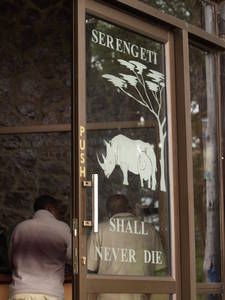
the Serengeti motto
At the Serengeti gate we climbed the small rocky hill/outcrop (kopje)
while waiting for the paperwork to be carried out. There were small
mice wandering around, which most likely came with the people but
could have been kopje-dwellers habituated to humans.
Coming north through the Serengeti we saw something of the wildebeest
migration. There was no sign of big cats, but did see other animals,
including a crocodile while crossing a small river. (I think I must
have dozed off here, as there are very few photos between the gate and
our campsite.)
A brief rainstorm revealed that the roof leaked — and that there
was a reason the tents, etc. were wrapped so carefully in tarpaulins
before being put onto the roof — but it didn't last long.
Our campsite at Seronera had no kind of fence, so there was nothing
between us and the wilderness at all! The rooms for cooking and eating
had pretty serious fencing on them, presumably to stop animals getting
at the food at night. And we were warned not to go outside the site
and to watch out for animals if we had to go to the toilet in the night.
The only mammals to be seen, however, were dwarf mongoose on the small
kopje immediately behind the eating hall.
There were maybe twenty people at our site, with room for many more.
And ours was one of a chain of sites, with the nearest only a few hundred
metres away, so it must be pretty busy in peak season. The site had
cold showers only, warmed a little by the water sitting in black tanks
on the roof. The eating room also had solar power for lights (and sockets
for battery charging).
Next: Serengeti morning
Previous: Njia Panda, Karatu
Up: Kenya + Tanzania
